|
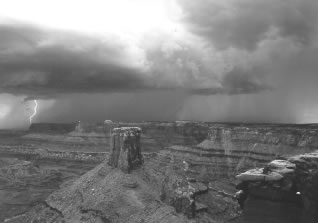 “How’s
the weather?” In the land of census taking and statistical
barrages, this is the most commonly asked question during
a conversation of people between the ages of 8 and 108. In
fact, this age span closely resembles this year’s temperature
range. “How’s
the weather?” In the land of census taking and statistical
barrages, this is the most commonly asked question during
a conversation of people between the ages of 8 and 108. In
fact, this age span closely resembles this year’s temperature
range.
Piled onto the discussion of temperature, this year we add
the words drought and fire. This year, the total rainfall
has not exceeded the amount that leaks from your bathroom
faucet. For those of you with tight plumbing - know how you
leave the tap on when you brush your teeth? Now imagine yearly
precipitation.
Average annual rainfall in the Moab area ranges between seven
and nine inches. Twelve inches a year and the place starts
to resemble a temperate rainforest. Five inches a year and
you’d better make up the guest room because the wildlife
will be moving into town. Recently, a friend described how
she was watering her garden and a young gopher snake slithered
over and started to drink directly from the hose!
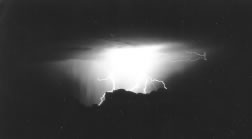 But,
let’s put things into perspective. The geologic layers
that surround Moab are exposed slices of time, representing
millions of years. Historical geologists have sorted out the
components of these layers - sands, silt, clays, organic matter,
fossils, etc., and woven these constituents into a snapshot
of the past. Some years back, when the Wingate Sandstone was
being laid down, this place resembled the Sahara Desert, so
perhaps this year’s rainfall should be taken in stride. But,
let’s put things into perspective. The geologic layers
that surround Moab are exposed slices of time, representing
millions of years. Historical geologists have sorted out the
components of these layers - sands, silt, clays, organic matter,
fossils, etc., and woven these constituents into a snapshot
of the past. Some years back, when the Wingate Sandstone was
being laid down, this place resembled the Sahara Desert, so
perhaps this year’s rainfall should be taken in stride.
Just because it hasn’t seriously rained since February
that doesn’t mean that all the plants are dying or that
the streams are totally dry. The streams are almost totally
dry and, though plants have adapted to dry conditions, there
is a leaf-fall going on that is reminiscent of an autumn day.
Even the cacti, those warehouses of moisture, seem gaunt and
withdrawn and are dropping their outer pads like pre-Christmas
hints.
According to one weather website, total precipitation for
the year, to July 20th, is around 0.17". Of course, it
rained the next day and probably doubled that total. Average
total precipitation for that time frame is 3.45", meaning
we are around 5% of average. Now that’s dry. Of course,
if you moved the rain gauge a mile away, that number could
change dramatically. Or if we get a couple of really hard
August rains, say ¾ of an inch each time, we would
jump to 33% of average.
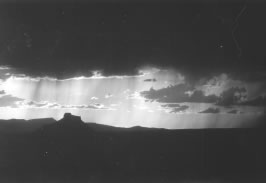 Depending
on whom you talk with, the word drought arises fairly often.
Drought is defined as “abnormally dry weather within
a geographic region where some rain might usually be expected.”
I think we qualify under that general statement. The argument
that this is the first year of a drought just doesn’t
seem to carry water (pun intended). The past several years
have also been dry, but it really depends on the index that
used to define drought. Depending
on whom you talk with, the word drought arises fairly often.
Drought is defined as “abnormally dry weather within
a geographic region where some rain might usually be expected.”
I think we qualify under that general statement. The argument
that this is the first year of a drought just doesn’t
seem to carry water (pun intended). The past several years
have also been dry, but it really depends on the index that
used to define drought.
There is the Palmer Drought Severity Index (PDSI) and the
Standard Precipitation Index (SPI), two commonly used indices
that are the Standard and Poor (S&P) of the weather market.
Measurements of precipitation, air temperature, and soil moisture
are collected and analyzed against historical data. The SPI
is a flexible measurement looking at different time scales,
since drought may be short-term or occur seasonally.
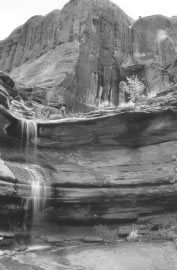 However
one defines drought, we have to agree that the discussion
of the weather is a daily phenomenon. And with the wildfires
raging across the west, fire is added into that discussion.
Though there is considerable disagreement about the causes
of these fires, one has to agree that the dry conditions influence
the severity and magnitude of some of these wildfires. So
it is no surprise to me when I hear the local meteorologists
describing the current weather conditions as “hot, dry
and burning up.” However
one defines drought, we have to agree that the discussion
of the weather is a daily phenomenon. And with the wildfires
raging across the west, fire is added into that discussion.
Though there is considerable disagreement about the causes
of these fires, one has to agree that the dry conditions influence
the severity and magnitude of some of these wildfires. So
it is no surprise to me when I hear the local meteorologists
describing the current weather conditions as “hot, dry
and burning up.”
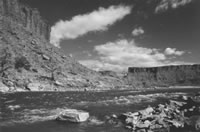
|